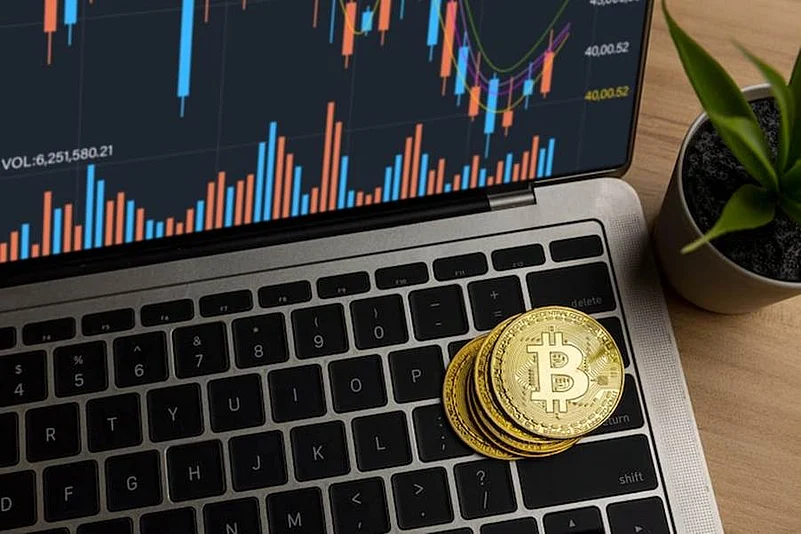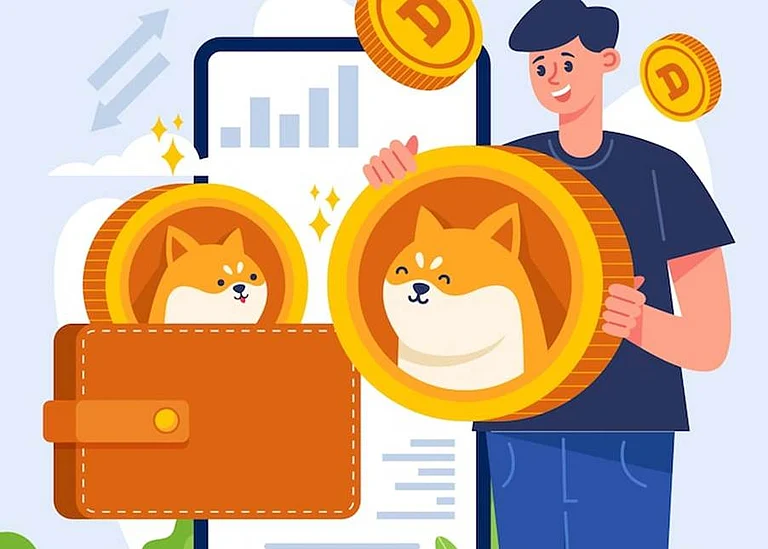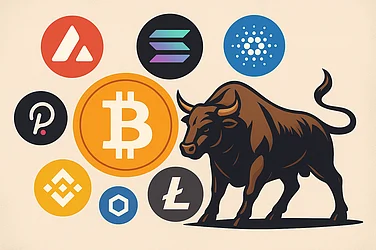The cryptocurrency world is an unstable, high-risk one, and investors from the farthest reaches of the earth are attracted to it with dreams of huge gains. But that unpredictability leads to a psychological effect known as FOMO—Fear of Missing Out. FOMO has a powerful effect on buying and selling patterns, with investors leaping into hasty decisions, often in opposition to their own long-term fiscal goals.
Whether it's waking up to find overnight Bitcoin growth, reading social media reports of gun altcoins, or learning overnight profits in crypto from friends, FOMO has a way of creating urgency that makes sense unnecessary. Understanding FOMO, how it behaves within the crypto universe, and what it does to investment choices is pertinent to anyone who engages in crypto investing. This article will examine the psychological causes of FOMO, trading behavior effects, and how to effectively overcome it.
Decrypting FOMO in Crypto
Crypto market FOMO is not a temporary emotional state—it's a strong psychological force. Investors who are susceptible to FOMO are motivated by fear of not being able to capitalize on an opportunity to make money or join a potentially profitable trend.
Common behaviors driven by FOMO are:
Impulse Buying: The investors can purchase the cryptos as soon as they hear about a price pump or market rise without conducting enough research.
Overtrading: FOMO makes investors buy and sell more, increasing the fees of transactions and exposing the investors to too much risk.
Basic Analysis Oversight: Most investors are staying in tune with the hype and sentiment instead of finding out what the market trends are, the technology fundamentals, or the long-term destiny of a coin.
For instance, during Bitcoin's ghastly price rallies, most investors invested at the peak only to witness quick corrections soon afterward. This is usual of how FOMO leads one to buy high and sell low—exactly the opposite of sound investment procedure.
Psychological Reasons for FOMO
There are several psychological reasons for FOMO in crypto investment:
1. Social Proof
Humans tend to look towards others for guidance, especially when they don't know what to do. Observing other people or social media influencers earn a lot of money will induce a herd phenomenon whereby other people will invest blindly.
2. Scarcity Heuristic
If a cryptocurrency is seen to be rare or in demand, the sense of urgency to buy grows. Low token supply or selective drops of tokens can very well create FOMO among investors who don't want to be left behind.
3. Anchoring Bias
Investors get stuck in a particular price point, past peak, or recent gain. This mental bias can cause irrationals such as buying at inflated levels because of historic highs.
4. Recency Effect
Historical market events, i.e., price fluctuations or rumor trends, may have an unequal bearing. Investors might give a higher priority to such events than to longer-term data or fundamental analysis.
Implications of FOMO on Crypto Trading
The impact of FOMO on trading volume has a number of implications, both for the individual trader and for the market as a whole:
Increased Market Volatility
FOMO-driven purchasing tends to trigger sudden price spikes in cryptocurrencies. The moment the initial excitement fades, the prices plummet hard, resulting in whipsaws that are volatile.
Speculative Bubbles
Overzealous FOMO has a tendency to overvalue the price of some coins beyond their true worth. The speculative bubbles then burst, inflicting great losses on late entrants.
Increased Risk Exposure
Investors based on FOMO ignore risk management strategies such as portfolio diversification or stop-loss. Because of this, they are vulnerable to sudden market reversals.
Emotional Decision-Making
FOMO overpowers reason, and this results in an emotional rather than a rational decision-making process with it. It can result in trend chasing or panic selling on a dip within the market.
Examples of FOMO in Crypto
What one may see in actual examples may give a clearer indication of the effect of FOMO:
Bitcoin's 2025 Bounce
Bitcoin broke through the $124,000 barrier for the first time in August 2025. Several investors who procrastinated got a shock from FOMO and invested near the peak. When the market went into correction, these investors lost money, setting the template on how FOMO-driven impulsive buying can turn out to be ineffective.
Shiba Inu 2023 Rally
The meme coin Shiba Inu skyrocketed with popularity in 2023 as a result of social media mania and celebrity endorsement. FOMO investors joined in at all-time highs with the expectation of recouping early investors' gains. When the mania disappeared, the prices crashed dramatically, illustrating the dangers of emotion-driven investment decisions.
Why FOMO Affects Buying and Selling Decisions
Following is a closer look at how FOMO impacts some behaviors in crypto investing:
Buying Decisions
Following the trend: Investors buy coins already in the upward trend.
Ignoring valuations: Fear-rather than fundamentals-driven.
Rapid entry: Hasty investments based on little research.
Selling Decisions
Panic Selling: Spurious market reversals have a tendency to result in emotional selling.
Missed opportunity regret: Investors sell prematurely or procrastinate until they sell too late out of fear of missing out on gains.
Table: FOMO-Driven Action vs. Rational Action
Behavior Type | FOMO-Driven Action | Rational Action |
Buying | Impulsive purchases at peak prices | Research-based purchases at logical price points |
Selling | Panic selling during minor dips | Hold or adjust portfolio based on strategy |
Research | Minimal research; hype-driven | Thorough analysis trend assessment |
Risk Management | Ignored or minimal | Stop-losses diversification position sizing |
FOMO Management Strategies
FOMO management requires discipline and considered strategy towards crypto investment. The following are effective strategies:
1. Define Clear Investment Goals
Set measurable goals based on risk tolerance, time horizon, and expected returns. Personalized goals act as a reference point, avoiding fear-driven decisions.
2. Conduct Extensive Research
Pre-research before purchasing or selling should address market trends, coin fundamentals, adoption rate, and risks. Prudent research keeps emotional decisions in check.
3. Apply Risk Management Strategies
Use stop-loss orders, diversify the portfolio, and invest proportionally to stay away from exposure. These actions protect investments during difficult times.
4. Be Emotionally Controlled
Recognize emotional hot buttons and avoid reacting to short-term market activity. Regular checking of your plan and avoidance of frenzy can protect against emotional trading decisions.
5. Take a Long-Term View
Instead of making short-term profits, focus on long-term growth. This helps to reduce the impact of FOMO on daily market activity.
6. Leverage Automation Tools
Automated trade software, portfolio trackers, and alert systems are able to make decisions without succumbing to emotional fervor.
Pros and Cons of FOMO in Crypto Investing
While FOMO is generally considered a negative influence, it can sometimes have beneficial effects in specific contexts.
Pros | Cons |
Short-term gains during market rallies | Buying at inflated prices |
Entry into emerging trends early | Vulnerability to market manipulation |
Encourages market participation and engagement | Emotional decision-making overriding rational analysis |
Conclusion
FOMO is a powerful psychological driver that can heavily influence buying and selling decisions in the cryptocurrency market. While it may occasionally present short-term profit opportunities, its long-term impact often leads to poor decision-making and financial losses.
By understanding the psychological factors behind FOMO, recognizing its influence, and implementing strategies like research, risk management, emotional discipline, and a long-term investment perspective, investors can navigate the crypto market more effectively. Crypto investing should prioritize rational decision-making over emotional reactions, enabling individuals to achieve sustainable growth and minimize unnecessary risk.
Investors who learn to manage FOMO will not only make better financial choices but also gain confidence in navigating one of the most volatile and exciting markets of our time.
FAQs
Q1: How can I recognize if I’m experiencing FOMO in crypto investing?
A1: Signs include impulsive buying or selling, frequent checking of prices or social media, anxiety about missing out, and neglecting research before investing.
Q2: Is it safe to invest during a market surge?
A2: Market surges can present opportunities, but decisions should be based on research, risk assessment, and long-term viability rather than hype.
Q3: How can I avoid making decisions based on FOMO?
A3: Establish clear investment goals, diversify your portfolio, maintain emotional discipline, and use risk management strategies like stop-loss orders.
Q4: Can FOMO lead to financial losses?
A4: Yes, acting on FOMO can result in buying overpriced assets and selling in panic, leading to significant losses.
Q5: Are there tools to help manage FOMO in crypto trading?
A5: Tools such as automated trading bots, price alerts, and portfolio trackers can help investors stick to a disciplined approach, reducing the impact of FOMO.

























